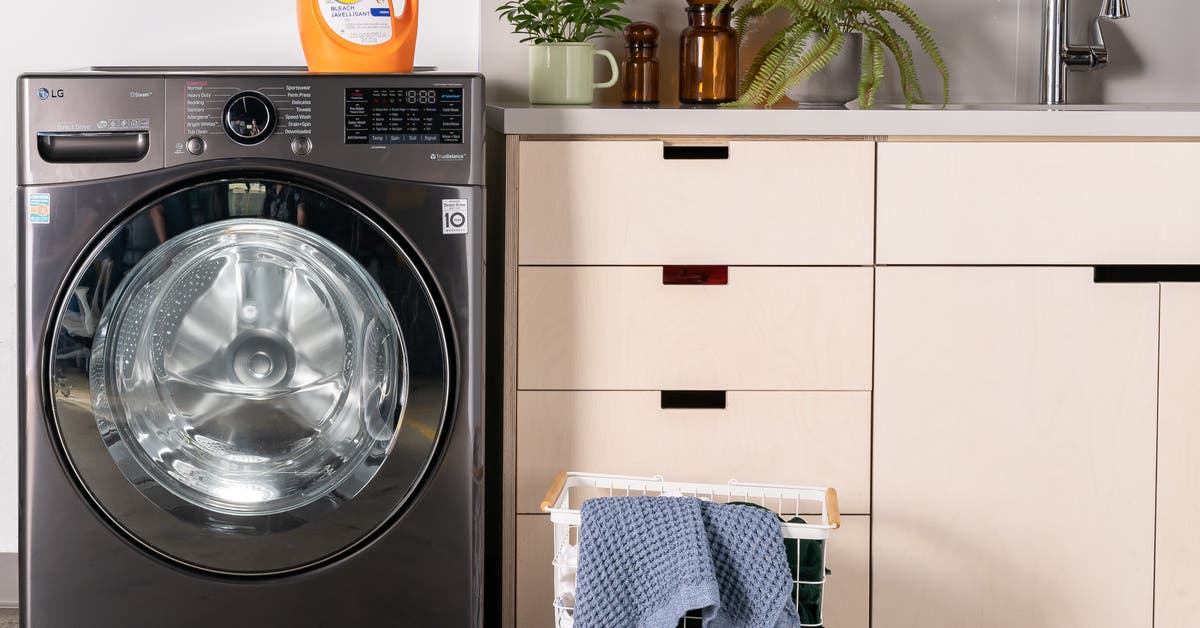
Our pick
This front-loader is quicker, gentler, and better at removing all types of stains than almost any other washer we’ve tested, and it has a solid reputation for reliability among multiple expert sources.
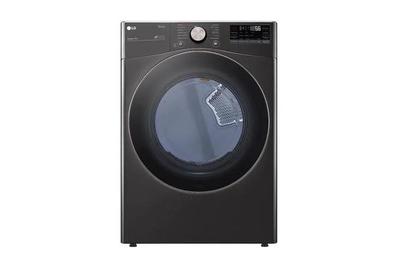
This is the matching electric dryer for the LG WM4000H washer, though most LG dryers (even older models) will stack on that washer. It’s also available in a black finish or with gas power.
The LG WM4000H is an excellent cleaner. It was one of the best washers we tested at removing all types of stains, yet it also handled fabrics more gently than most models we tried. The WM4000H can wash a load significantly faster than a typical high-efficiency washer, and it has one of the widest varieties of wash settings, including a stain-loosening prewash option, super-hot temps, and extra rinses. Like most front-load washers, the WM4000H has a huge capacity, runs quietly, and is notably efficient with water and energy. It even has a unique door-prop feature to help prevent the dreaded mildew smell. We found the Wi-Fi–connected features useful, including the end-of-cycle notifications, maintenance alerts, remote start, and additional downloadable wash programs; the LG ThinQ app was also more intuitive and full-featured than those of our other picks. Reliability is tough to predict, but in recent years LG front-loaders have had some of the lowest repair rates among mainstream washers, according to multiple sources. (They still won’t last as long as your parents’ old Maytag, though.) The matching LG DLEX4000 dryer dried loads faster than most of the other dryers we tested.
The big downsides to the LG washer and dryer are that the control panels are hard to use in dim lighting and LG’s customer service stinks, so in the unlikely event that you need a repair under warranty, it might be a hassle.
The WM4000H and its matching dryer (which is available in electric or gas) are stackable—in fact, you can stack any 27-inch LG dryer, new or old, on top of the WM4000H. LG makes a similar washer, the WM3600H, which omits some useful features but costs less.
Runner-up
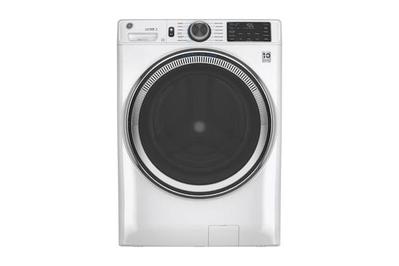
GE’s GFW650 does a great job of cleaning clothing and is better at reducing mold issues than any washer we’ve tested. But compared with our LG pick, it’s slower to wash clothes and potentially less reliable.
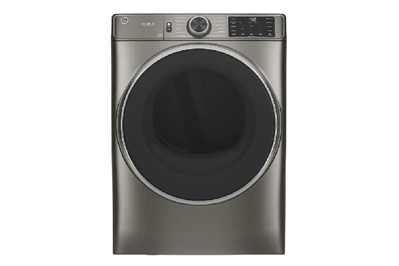
The GE GFW650’s matching dryer worked perfectly well in our tests, although it dried clothes a tad slower than our pick from LG. It’s available in a white or nickel finish, and in a gas or electric version.
The GE GFW650 cleaned about as well as the LG WM4000H in our tests and was similarly gentle on fabrics. It also does more to reduce potential mildew and mold issues than any other washer we’ve tested: The gasket, detergent tray, and drain hose are made with antimicrobial Microban, and the washer has an option for venting that you can run after a cycle has finished to dry the drum with the door closed. The GFW650 is not our main pick because in our tests it took about 20 minutes longer, on average, to wash a load on Normal than the WM4000H; plus, we found that LG full-size washers rate more highly for reliability than GE’s. Like the WM4000H, the GFW650 has numerous wash programs, as well as options for presoaking and extra-hot water. If you choose to connect your washer and dryer to Wi-Fi—and succeed in doing so—GE’s SmartHQ app provides many of the same features as LG’s ThinQ, including cycle-end notifications, downloadable wash programs, and remote start, though LG’s app is better about providing performance reports and diagnostics. The GE GFW650 has an interior light, a reversible door, and an option for auto-dispensing detergent.
The GE GFD65 dryer performed about as well as the LG DLEX4000 but took about 10 more minutes to dry a load on Normal. It comes in gas and electric versions.
Upgrade pick

Although the Miele WXD160 holds only half as much laundry as most front-loaders do, you can expect it to last at least twice as long. It’s also great at removing stains.

The matching, stackable dryer for the Miele WXD160 washer is a ventless heat-pump model, so it takes twice as long to dry a load as a vented model. But it can plug into a standard 120-volt outlet and is much more efficient.
Only a few brands make durable washers anymore, and some of those heavy-duty machines are essentially laundromat washers—often loud, rough on fabric, inefficient, and not so great at cleaning. The Miele WXD160 is the opposite of all those things, and it’s still somehow built to last for 20 years. In our tests, it was just as effective at removing stains as the LG WM4000H—but it should last twice as long, and it costs only a few hundred dollars more. The catch is that it’s a compact washer: It has about half the capacity of a typical 27-inch model. Finding Miele models and technicians in some parts of the US can be hard, too. Another quirk is that its matching dryer, the Miele TXD160, is a ventless heat-pump model. As a result, the TXD160 takes about twice as long as a standard vented dryer to dry clothes but is much more energy efficient, and you can hook it—and the washer—up wherever you have a standard 120-volt outlet.
Budget pick
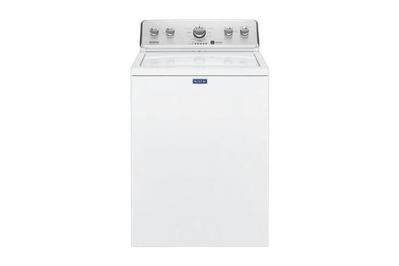
If you need to save money up front, this top-loader with an agitator is a decent cleaner that’s pretty efficient by default and includes several popular features. It might cost you more in the long run, though.

The matching electric dryer for the Maytag MVWC465HW washer has a moisture sensor, but otherwise it’s as bare-bones as a dryer can get. A gas-powered version is available, too.
The Maytag MVWC465HW washing machine has been replaced with a similar model, the Maytag MVW4505MW, and is no longer in production. The MVW4505MW is largely the same as the MVWC465HW, but it has a slightly larger capacity than its predecessor and two additional rinse cycles. The Maytag MEDC465HW dryer has also been replaced with a similar model, the Maytag MED4500MW, which is the same size as the MEDC465HW, but includes new features like a Wrinkle Prevent phase. We plan to test both soon.
If you can’t or won’t spend much on a washer, we recommend considering whichever top-loader with an agitator you can find on sale from Whirlpool or Maytag (they’re the same basic machines, with slightly different features) that’s somewhere in the range of $600. We tested the Maytag MVWC465HW and found that it was a decent cleaner. It’s pretty efficient and not too rough on its default Normal cycle. It also has some settings that make it act more like the traditional top-loaders some people are more comfortable with, including a Deep Water Wash option for additional water and a Powerwash setting for stronger agitation. The matching dryer, the Maytag MEDC465HW, took about 15 minutes longer than the LG DLEX4000 to dry our test load on Normal, and it has no speed-dry option. But it gets the job done, and some people may prefer its pared-down controls and its lack of bells and whistles.
We can’t predict whether the Maytag set will be especially reliable or long-lasting—this isn’t the Maytag of old, and Whirlpool’s reputation isn’t what it used to be. (We actually broke one part of the washer during testing, though we weren’t using it as it was intended to be used.) You might also end up spending more on utilities and new clothes than you would using a gentler, more efficient machine, such as a front-loader. But if your priority is to save cash on the purchase, we think something like this Maytag offering is your best bet.
Credit : Source Post






